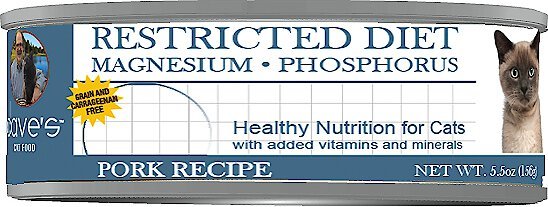Meow Mix Original Choice All Life Stages Chicken, Turkey, Salmon and Ocean Fish Recipe Dry Cat Food
Meow Mix Original Choice Dry Cat Food is specially formulated to help adult cats stay healthy and happy. This dry food for cats is the perfect mix to help you connect with your cat over a healthy meal. To maintain wellness throughout adulthood, fully grown cats need the proper nutrition to keep them in top shape as they age. Meow Mix Original Choice provides all the essential nutrients your cat needs, including high-quality premium protein and essential fatty acids to help support strong muscles and keep their coat looking its best. This dry cat food blend is packed with tons of wholesome ingredients and the irresistible flavors of chicken, turkey, salmon and ocean fish. This tasty dry food for cats is 100% complete and balanced nutrition for adult cats with all the vitamins and minerals they need for optimal health. Even for the pickiest of kitties, happiness starts here with a Meow Mix Original Choice Dry Cat Food mealtime they ask for it by name!
Meow Mix Original Choice Dry Cat Food is specially formulated to help adult cats stay healthy and happy. This dry food for cats is the perfect mix to help you connect with your cat over a healthy meal. To maintain wellness throughout adulthood, fully grown cats need the proper nutrition to keep them in top shape as they age. Meow Mix Original Choice provides all the essential nutrients your cat needs, including high-quality premium protein and essential fatty acids to help support strong muscles and keep their coat looking its best. This dry cat food blend is packed with tons of wholesome ingredients and the irresistible flavors of chicken, turkey, salmon and ocean fish. This tasty dry food for cats is 100% complete and balanced nutrition for adult cats with all the vitamins and minerals they need for optimal health. Even for the pickiest of kitties, happiness starts here with a Meow Mix Original Choice Dry Cat Food mealtime they ask for it by name!
- 100% complete and balanced nutrition
- Provides all essential vitamins and minerals
- High quality protein to help support strong, healthy muscles
- The perfect mix of delicious flavors of chicken, turkey, salmon, and ocean fish
Additional information
| Country of Origin | Made in USA |
|---|---|
| Breed Size | Extra Small, Small, Medium, Large, Extra Large |
| Flavor | Chicken, Turkey, Salmon and Ocean Fish |
| Health Features | Muscle Health |
| Indoor/Outdoor | Indoor and Outdoor |
| Life Stage | All Life Stages |
| Primary Flavor | Chicken, Turkey, Ocean Fish, Salmon |
| Special Diets | None, AAFCO Formulated |
| Manufacturer Part Number | 2927452099 |











by Mike
My cat seems to really like this brand of cat food. I really like it because it is inexpensive. My cat isn’t very picky about food, but I sometimes buy this cat food. I like to buy cat food that has more nutrients.
by Frank
Only brand I buy only brand he will eat I think that alone speaks for itself but an added bonus is the price is fairly cheap too so this is a win win in my house.
by Elizabeth
I would buy Meow Mix for my cat often, it is an affordable option my cat would always eat. Original has all thr flavors tour cat is bound to love! And if your cat is feeling bored you can always change things up with any one of Meow Mix’s amazing flavor options.
by Austin
I have been feeding my cats Meow Mix for years! We try other stuff but come back to Meow Mix because its what they like. We have tried the different flavors, but Original Choice it turns out is just the best choice.